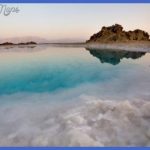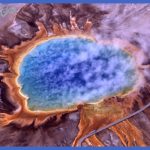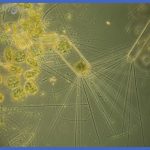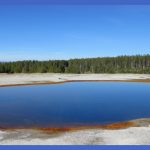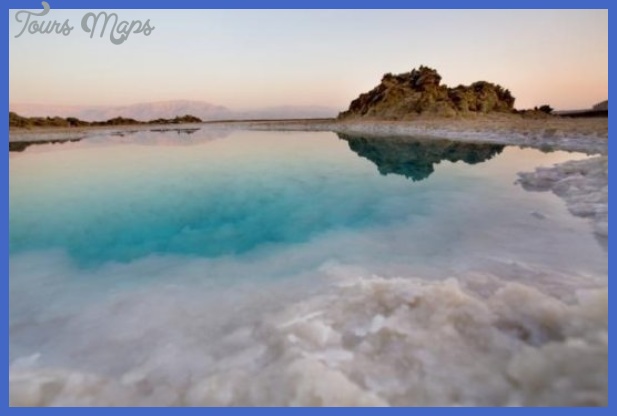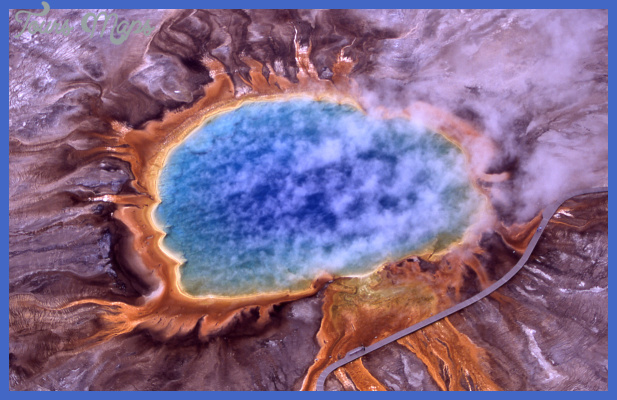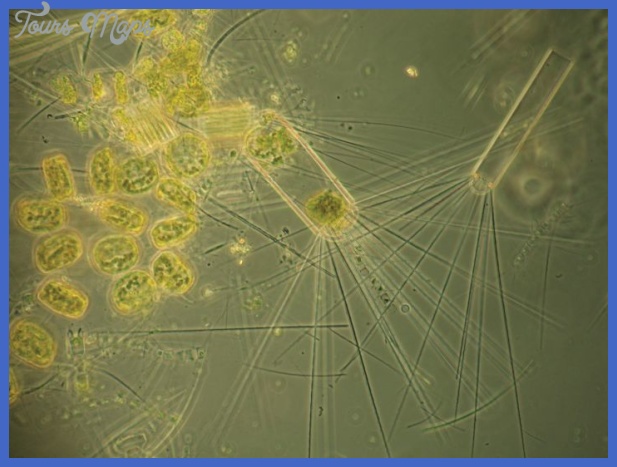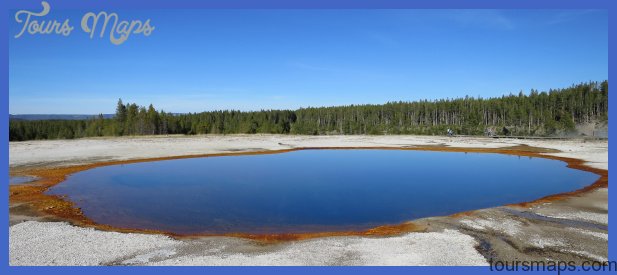Microorganisms are all around us, present in all parts of Yellowstone, yet individually invisible to the naked eye. Living in very hot water are ones that interest us as visitors. The thermophilic archaea, bacteria, and algae form beautifully colored filaments and mats that are often seen in the runoff from hot springs and sometimes in the springs themselves. You’ll see outstanding examples of these mats at Midway and Upper geyser basins and at Mammoth Hot Springs. Lichens As you follow trails throughout the park, you may notice a large boulder or an old tree trunk with a crusty sort of growth on it. This is probably a lichen, a combination of an alga and a fungus that live together symbiotically, that is, in a mutually beneficial relationship. An alga is an ancient form of life that can convert light to energy via photosynthesis, while a fungus obtains nourishment by breaking down organic matter (such as algae). The thousands of different species of lichen may be orange, red, yellow, green, gray, brown, or black.
They can utilize water from fog and dew, and, along with the action of water and wind, they serve as one of the most important factors in turning rocks into soil. Lichens do not grow in the geyser basins they cannot abide the sulfur dioxide. Some forms of lichen commonly seen in Yellowstone are old man’s beard (Usnea longissima), which hangs from tree branches in a dark green mass and can be a good source of vitamin C, and wolf lichen (Letharia vulpina), a bright yellow-green type found on sunny tree trunks and branches. In Douglas fir forests, such as grow near the Grand Canyon of the Yellowstone, you may see dark brown horsehair lichen (Bryoria sp.) hanging from branches and looking like coarse twisted hair. Mosses and mushrooms It takes an expert to differentiate some types of lichen from the mosses. Common sorts of moss form green mounds or mats and grow in moist places everywhere, and some lichens may look similar to them. Both mosses and lichens grow on other plants but derive their nutrients from air, water, and dust particles (that is, they are epiphytic, not parasitic). In moist places throughout the park, you may see mushrooms of various shapes, colors, and sizes.
Observe and admire but do not pick them unless you’re an expert. It’s not against regulations to pick edible plants for immediate consumption in a national park, but at least six Yellowstone mushrooms are poisonous. Insects, amphibians, and reptiles Let’s not talk about the biting horse flies and mosquitoes that torture hikers in early summer nor about the moths that fly into the flame of your camp lantern, but only mention a few insects and larger creatures that are fun to see. Those beautiful blue gossamer-winged insects hovering about the streams are dragonflies and their smaller relatives damselflies, both of the order Odonata, meaning toothed. Some dragonflies are also called darners for their resemblance to long thin darning needles. They hold their two pairs of wings horizontally, while damselflies hold their wings above the body. They can eat as many as 300 mosquitoes and other small insects a day. Look for reddish gold dragonflies in drier parts of the park. The water strider (Gerris remigis) is also called the Jesus bug for its ability to walk on water. Its extremely long back pair of legs provides steering ability, allowing the bug to spread its body weight, while the middle pair provides oarlike power. Living in hot spring waters is the ephydrid fly (Ephydra bruesi), whose larvae live on microorganisms. The adult flies you’ll see swarming in shallow hot water may not eat at all. Among the many types of butterflies, some conspicuous ones are the small blues like the spring azure (Celastrina argiolus), various shades of yellow ones called sulfurs (genus Colias), and the large yellow and black swallowtails of the family Papilionidae.
In August of dry years you may be surprised at the hordes of jumping shorthorned grasshoppers (family Acrididae or Locustidae) in every field you pass. In a glacier north of Cooke City just outside the Northeast Entrance a great many grasshoppers have been preserved for some 300 years. Not a lot of frogs and toads live in Yellowstone, and those that live here seem to be diminishing in number. Most common is the 2 to 3 inch (5-7.5 cm) Columbia spotted frog (Rana luteiventris). These tiny animals are extremely sensitive to air and water pollution, and it has recently been discovered that they’re falling prey to a parasite. Small garter snakes (Thamnophis elegans or sirtalis) are fairly common but harmless. Along trails in the lower altitude river valleys, you have a slight chance of seeing a bull snake (Pituophis genera), which may be up to 7 feet (2 m) long but has no poison, or a rattlesnake (Crotalus viridis viridis) up to 4 feet (1.2 m) long and poisonous.
THE SMALLEST LIFE FORMS Microorganisms Yellowstone Photo Gallery
Maybe You Like Them Too
- The Best Cities To Visit in The World
- World’s 10 Best Places To Visit
- Coolest Countries in the World to Visit
- Travel to Santorini, Greece
- Map of Barbados – Holiday in Barbados

